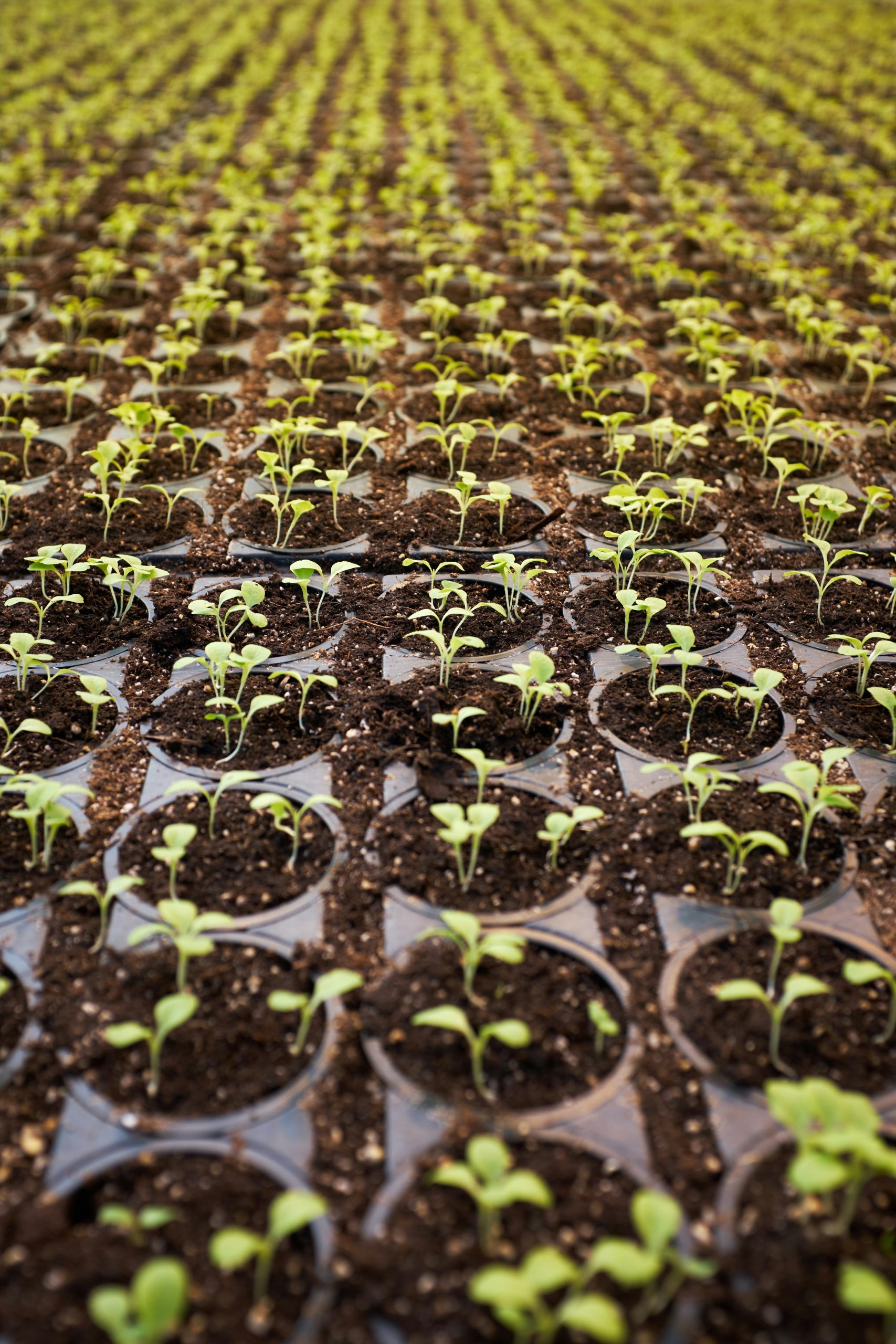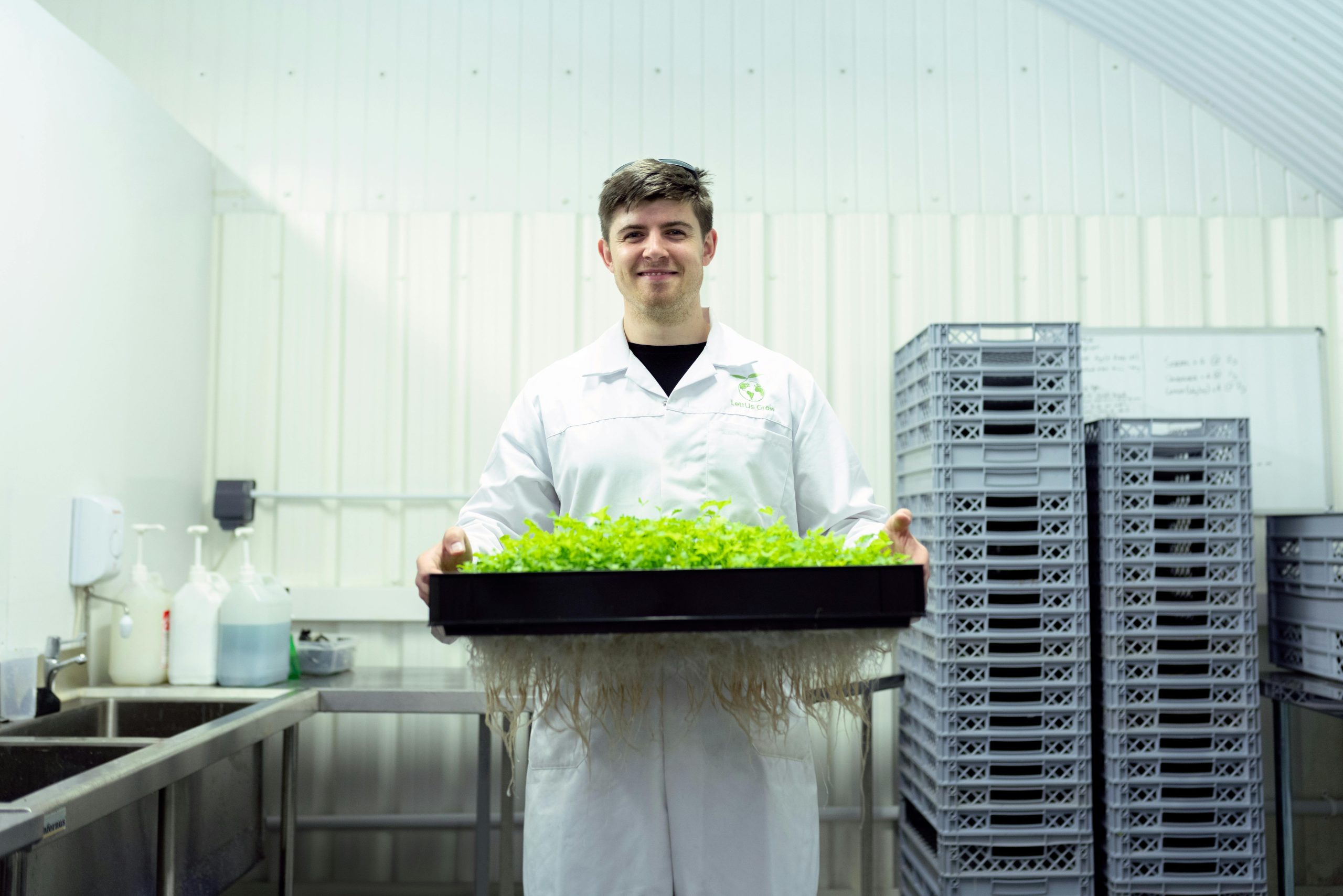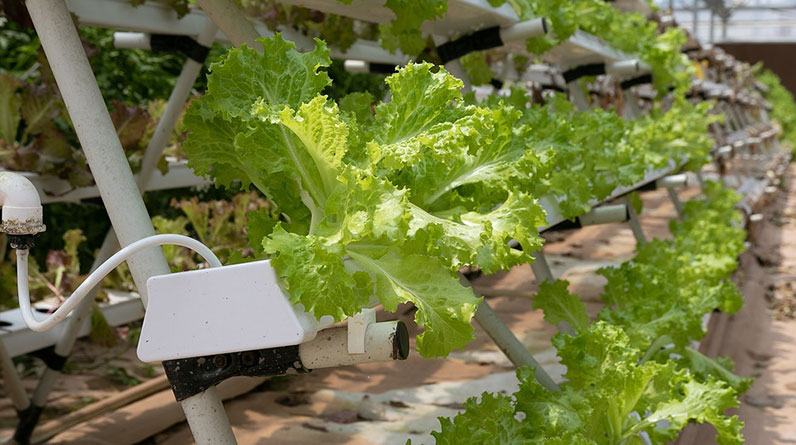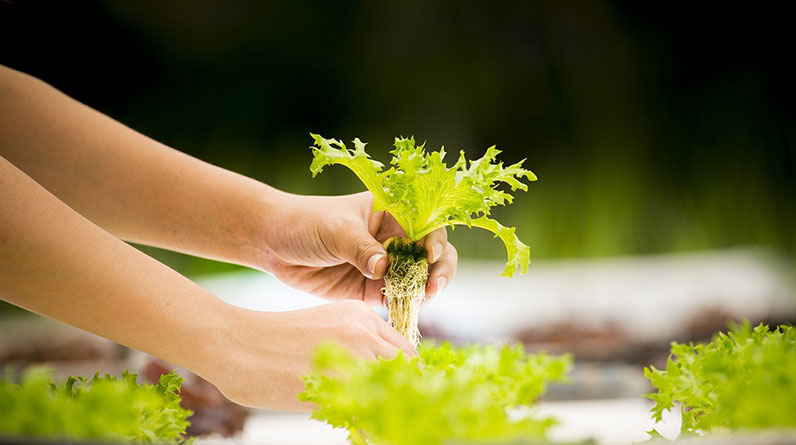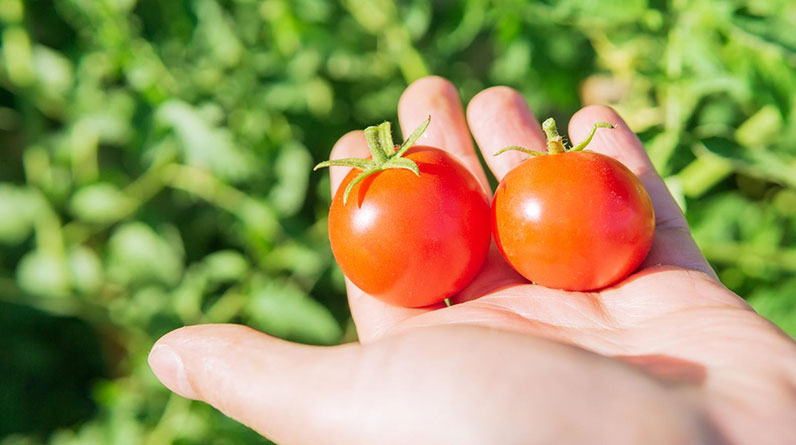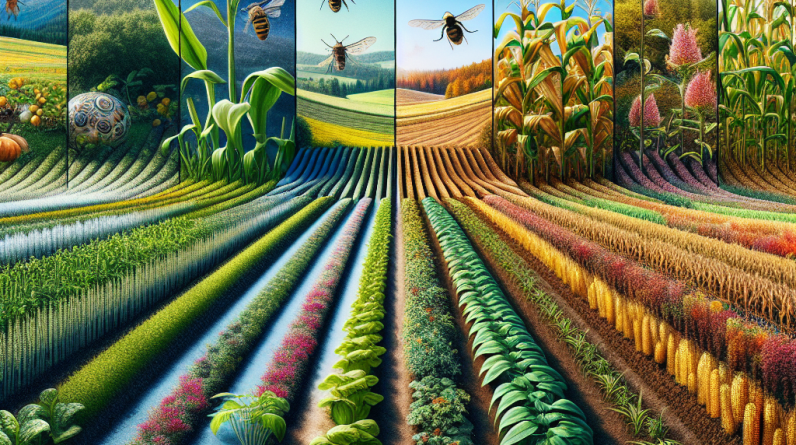
Soil Health and Preparation
Understanding Soil Composition
When I started my pesticide-free farming journey, the first thing I learned about was soil health. It’s really the foundation—literally! Knowing what kind of soil you have can help you choose the best crops and the right time to plant. For instance, sandy soils drain fast, while clay soils hold moisture better. You want to check the pH level too; this affects how your plants can absorb nutrients.
This isn’t just some boring science lesson; it’s crucial information that can totally change your farming game. I remember one season when my tomatoes just wouldn’t grow, and it turned out my soil was too acidic! A quick amendment with lime, and kaboom! Those babies thrived.
You’re going to want to mix in compost or organic matter to enrich your soil. I like to think of it as giving your garden a great meal. Rich, nutrient-dense soil means healthier plants. Plus, using compost helps in reducing waste. It’s a win-win, really.
Cultivation Techniques
Now that you’ve got your soil ready, let’s talk about cultivation techniques. This is where the magic happens! Employing methods like crop rotation and companion planting can make a huge difference. Each crop brings something unique to the table, helping to maintain equilibrium in your garden.
Crop rotation not only prevents nutrient depletion but also reduces pest buildup. I remember feeling overwhelmed during my first year when pests invaded my crops. Switching things up each year helped keep them on their toes!
Companion planting is another ace up your sleeve. Some plants naturally repel pests or attract beneficial insects. For example, planting marigolds with your vegetables can deter aphids. It’s nature helping nature, and it’s so cool to see it work in action!
Improving Biodiversity
Diversity is not just for the animal kingdom; it’s super important in farming too! By planting a variety of crops, you’ll create a dynamic ecosystem that supports healthy growth. Different plants can attract different types of beneficial insects, which help with pollination and pest control.
Let’s not forget about the power of wildflowers. Incorporating native flowers into your farm not only looks beautiful but also creates habitats for pollinators. I can’t stress how much my strawberry yields improved when I planted some bee balm around the patch!
Plus, a diverse garden is more resilient to diseases and pests. When one crop fails, another might thrive! That’s a lifesaver in farming, ensuring you’re not entirely dependent on a single type of harvest each year.
Natural Pest Management
Identifying Common Pests
As tempting as it might be to spray those pesky bugs, I learned the hard way that natural pest management is the way to go. First off, you need to know which critters are invading your space. Identification is key! Some pests can actually be beneficial, and some, like ladybugs, munch on the ones that are harmful.
Having a good grasp of what’s in your garden can help you take targeted action. Remember, not all bugs are bad! Keeping an eye on your plants will help you catch issues before they become too big to handle.
Researching your local pest populations can save you tons of headaches. I often consulted online resources or local gardening groups whenever I’d spot something unfamiliar. It’s amazing how helpful the gardening community can be!
Use of Natural Predators
Speaking of beneficial creatures, inviting natural predators into your garden is a fantastic way to manage pests. I’ve had great success with introducing ladybugs and lacewings, which are voracious consumers of aphids. It’s like having a tiny army protecting your plants!
You can also create habitats for birds, like putting up birdhouses or small feeders. Chickadees and wrens love to snack on caterpillars and other harmful insects. It’s like saying, “Hey, come on in! Enjoy a feast!”
Encouraging these natural allies takes a bit of time, but trust me, it’s worth the wait. Watching these tiny hunters at work is often just as enjoyable as harvesting your crops!
Homemade Solutions
If you’re looking for ways to deal with those pesky pests without chemicals, homemade solutions are a game changer! I’ve whipped up simple remedies from household items, like neem oil or garlic spray to fend off critters. It’s surprising how effective they can be!
Neem oil, for instance, works wonders against a variety of pests, and it’s completely organic. I always make a fresh batch and apply it when I notice a pest problem brewing. A little goes a long way!
Not only are these solutions effective, but they also give you a sense of empowerment. You’re not just fighting against nature; you’re working with it. Plus, I love knowing I’m keeping my garden chemical-free!
Seasonal Crop Planning
Understanding Growing Seasons
Planning for the seasons is another essential piece of the puzzle. Knowing when to plant your crops based on the region and climate is key. I often refer to planting calendars to time my sowing properly. These calendars lay out the best times for each type of vegetable.
Fall planting can yield some delicious crops, too! I’ve found that crops like kale and carrots get sweeter when they grow in cooler temperatures. It’s all about timing, so don’t be afraid to experiment!
Moreover, recognizing your local growing season can make a huge difference in your overall yield. I learned not to rush spring planting too soon; waiting just a bit longer can save you headaches from unexpected frost!
Crop Rotation Strategies
As I mentioned earlier, crop rotation plays a huge role in my farming practices. It’s essential for avoiding soil depletion and inhibiting pest populations. Planning ahead for how you’ll rotate your crops not only keeps the soil healthy but also maximizes your yield over time.
Creating a rotation schedule can be a little complex, but it’s so beneficial for long-term success. For example, I’ve found alternating heavy feeders like tomatoes with nitrogen-fixing crops like beans works wonders!
Every year, I try to mix things up a bit. It keeps the garden lively and prevents the buildup of pests and diseases that thrive on the same crops year after year.
Extending the Harvest
Finally, let’s talk about how to extend your harvest. This is where things get really fun! By stagger planting—seeding your crops in intervals— you can enjoy fresh produce over a longer period. I always seem to have tomatoes coming in waves; it’s fantastic!
You can also utilize techniques like succession planting or using cold frames to extend your growing season. I built a simple cold frame for my lettuce and have been enjoying salads well into the colder months.
Don’t forget to save some seeds from your best crops, too! Keeping heirloom varieties can allow you to create a sustainable cycle of produce year after year.
Community and Education
Engaging with Local Growers
Getting involved with local growers and farming communities can be one of the most rewarding experiences. I’ve attended workshops, visit farmers’ markets and participated in community gardens. Every interaction is a chance to learn something new!
By sharing experiences and tips, we build a sense of community. I recall a particularly enlightening session where we discussed organic pest control methods. It gave me fresh insights into what I could do differently in my own garden.
Don’t shy away from connecting with experienced farmers! Their wisdom can help you avoid common pitfalls and cultivate your skills at a faster rate than going solo.
Sharing Knowledge
One of the great joys I’ve found in farming is sharing knowledge. Whether it’s through social media or local gardening clubs, there’s a sense of fulfillment in teaching others what you’ve learned over the years. I often share photos of my garden and ask for advice from my followers. It’s like a big, interactive learning experience!
Just as I benefit from others’ wisdom, I love providing tips to newcomers in the farming scene. Little things, like how to make natural fertilizers and pest repellents, can empower them to embrace a pesticide-free approach. It’s all about paying it forward!
And let’s be real, harvesting valuable insights from others can lead to some wonderful friendships as well. You start developing your own gardening tribe, and that’s pretty awesome.
Resource Utilization
Lastly, utilizing available resources makes all the difference. There are countless books, online forums, and classes aimed at organic and pesticide-free practices. I’ve gravitated towards some fantastic resources that provide in-depth knowledge on sustainable techniques.
Websites that focus on regenerative agriculture and community-supported agriculture programs are particularly helpful. They offer rich tools and guides tailored specifically for sustainable farming. Bookmark them for when you need that extra bit of inspiration!
It can feel overwhelming at first, but gathering resources is an important step. The more knowledge you acquire, the better equipped you’ll be to tackle the challenges of farming year-round!
FAQ
1. What are the benefits of farming pesticide-free?
Farming without pesticides promotes better soil health, increases biodiversity, and yields healthier produce. It also helps protect the environment and can reduce production costs in the long run!
2. Is it challenging to manage pests naturally?
It can be, especially when starting. But with patience, proper identification, and biological controls, you’ll find natural pest management rewarding and often more effective.
3. How do I know which crops to plant for my area?
Research your local climate and growing seasons. Using planting calendars specific to your region is a great way to start, and local gardening groups can be fabulous resources.
4. Can I still use fertilizers in a pesticide-free garden?
Absolutely! Just opt for organic fertilizers or create your own compost. Nutrient-rich soil is crucial for healthy plants, whether using chemicals or organic methods.
5. How do I start engaging with local farming communities?
Check out local farmers’ markets, attend workshops, or join gardening clubs. Social media platforms also host vibrant communities of growers from all over, ready to share and learn!




